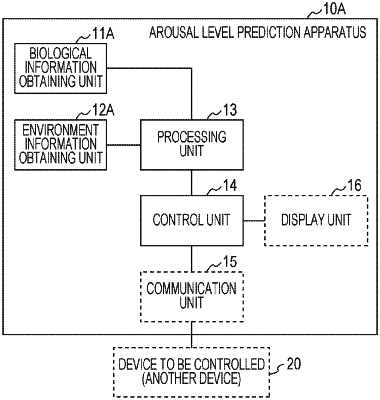| CPC A61B 5/18 (2013.01) [A61B 5/01 (2013.01); A61B 5/024 (2013.01); A61B 5/026 (2013.01); A61B 5/0295 (2013.01); A61B 5/02405 (2013.01); A61B 5/02444 (2013.01); A61B 5/0816 (2013.01); A61B 5/0878 (2013.01); A61B 5/1118 (2013.01); A61B 5/14551 (2013.01); A61B 5/165 (2013.01); A61B 5/4806 (2013.01); A61B 5/486 (2013.01); A61B 5/7275 (2013.01); A61M 21/00 (2013.01); B60H 1/00742 (2013.01); B60K 28/06 (2013.01); G06F 3/165 (2013.01); G08B 21/06 (2013.01); G16H 40/63 (2018.01); G16H 40/67 (2018.01); G16H 50/20 (2018.01); G16H 50/30 (2018.01); G16H 50/50 (2018.01); A61B 3/113 (2013.01); A61B 5/0261 (2013.01); A61B 5/0285 (2013.01); A61B 5/02416 (2013.01); A61B 5/091 (2013.01); A61B 5/1032 (2013.01); A61B 5/7278 (2013.01); A61B 2503/22 (2013.01); A61B 2503/24 (2013.01); A61B 2560/0242 (2013.01); A61M 2021/0027 (2013.01); A61M 2021/0044 (2013.01); A61M 2021/0066 (2013.01); A61M 2021/0083 (2013.01); A61M 2205/3303 (2013.01); B60K 2370/193 (2019.05); G04F 10/00 (2013.01)] | 17 Claims |

|
1. An arousal level prediction apparatus, comprising:
a first obtaining unit that obtains first biological information by a first sensor that detects user's biological information indicating current biological information of the user;
a second obtaining unit that obtains first environment information by a second sensor that detects the user's environment information indicating a current environment around the user;
a third obtaining unit that obtains living information of the user indicating an activity history of the user; and
a processor
that calculates a first arousal level indicating a current arousal level of the user based on the first biological information,
that predicts a second arousal level, which is an arousal level of the user at a certain period of time later, based on the first arousal level, the first environment information and the living information, and
that outputs the second arousal level.
|